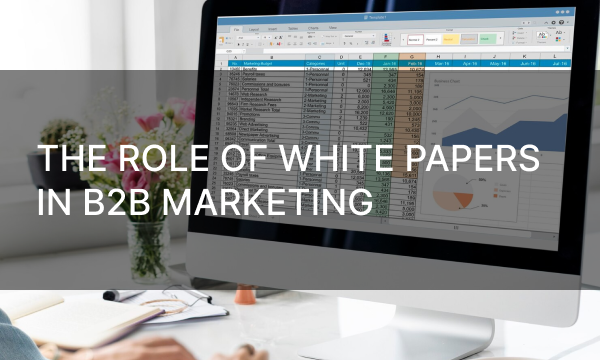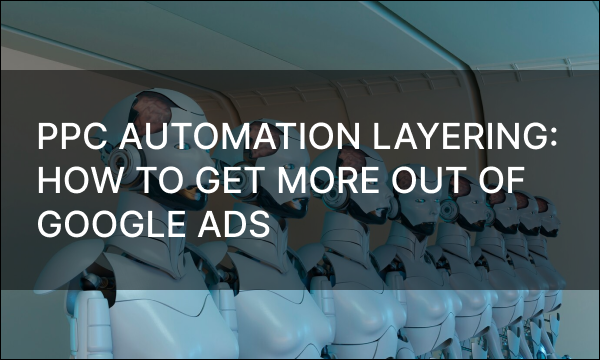Introduction to the pricing mechanisms to analyze the factors influencing Google Ads costs
In the current digital environment, search engine marketing is, without doubt, a vital tool for expanding online presence and attracting more users to websites. Google Ads offers exceptional reach and targeted advertising options, but navigating this complex landscape can be challenging. Thus, understanding the pricing structures that influence advertising costs is crucial as they not only impact ad spends but also play a significant role in the performance of marketing strategies and the allocation of budgets.
By examining the elements that drive Google Ads pricing you can make informed decisions that will boost your ROI. Making sense of the various cost factors and variables of Google Ads can help you develop a solid strategy. In this article, we’ll explore the key cost variables and the complexities of Google Ads pricing, core mechanisms and important factors that impact costs. Whether you’re a seasoned marketer or a novice, you’ll gain the knowledge necessary to use Google Ads effectively and optimize your ad budget.
The Basics of Google Ads Pricing
 Photo by Diane Helentjaris on Unsplash
Photo by Diane Helentjaris on Unsplash
Google Ads uses a PPC pricing model, enabling you to bid on keywords related to your products or services. You are charged only when a user clicks on your ad, making this a performance-driven ad strategy. CPC can fluctuate greatly based on factors like keyword competitiveness, ad quality, and the specific industry. High-volume keywords carry a higher CPC, while less-volume ones tend to be more budget-friendly, allowing you to customize your campaigns to match your financial resources.
Google Ads also provides various pricing models, such as CPM, which is charged based on the number of times your ad is shown, and CPA, which is charged when a specific action is completed. Each model is tailored to different marketing goals, allowing you to choose the approach that best suits your campaigns. You can also set a daily or monthly budget to manage your expenses, ensuring that you stay within your financial boundaries while effectively reaching your desired audience.
To understand Google Ads pricing, you need to make sense of the auction system. When a user performs a search, Google initiates an auction that specifies the types of ads and the order in which they are shown. Your final ad bid placement depends on both your bid amount and your Quality Score, which identifies the relevance and quality of your ad content and corresponding landing page. A higher Quality Score results in lower costs and improved ad positions, emphasizing the significance of creating compelling ads and effective landing pages for successful Google Ads campaigns.
Variables That Affect the Price of Google Ads
Here are the main factors influencing the sliding scale:
1. Industry
Every business has its own unique characteristics, and the pricing for Google Ads corresponds to the potential value. The industry in which a business operates plays a crucial role in determining ad costs. The range of CPC in Google Ads is extensive. By examining the underlying factors more closely, it becomes clear why this pricing structure makes sense. Google Ads pricing based on your industry and the potential revenue from your ads offers a valuable starting point to help you form expectations.
2. Customer Life Cycle
Another crucial factor to consider is the time it takes for a prospect to convert. A click isn’t of much value unless the customer ultimately takes action. While customers may return later, the immediate focus should be on closing the sale, given the intense competition. Essentially, a longer customer lifecycle results in higher Google Ads costs.
3. Current Consumer Trends
Even seemingly unrelated global events can cause your average Google Ads CPC to fluctuate. However, industry conditions, global events and ongoing advertising costs are closely linked. For instance, a company producing face masks that received significant profits during a surge in demand due to the Covid-19 pandemic may have also faced intense competition. By understanding how external factors influence Google Ads pricing, you can quickly adjust your strategy and determine when it’s better to increase your ad spend or to pull back.
4. Account Management
Keeping costs low while maximizing profits requires effort and care. Without diligence and care, it is easy to fall behind. Effective account management is critical to achieving and maintaining that desired balance.
Effective account management includes the following forms:
- Data-driven SEO
- Maintaining keyword lists
- Performance reports
- Auditing the account regularly and making appropriate changes
How Google Ads Cost Per Click Is Determined
 Photo by Henrik Dønnestad on Unsplash
Photo by Henrik Dønnestad on Unsplash
The Google Ads pricing model is based on an auction system where some bidders win and others don’t.
Here is why:
1. Quality Score
Even top-tier ads can underperform if your Quality Score falls short. Your website receives a rating between 1 and 10, reflecting how well your ad content matches your landing page. A mismatch makes your ad appear deceptive, leading to lower ratings and higher costs. Simply put, your Quality Score influences your Google Ads prices, as reputable businesses with higher rankings benefit from lower advertising costs.
Google’s algorithms continuously monitor whether businesses are bidding on advertising keywords related to search queries. When this happens, relevant ads enter an auction process. Naturally, those with best Quality Scores are more likely to receive lower costs and better ad placements.
2. Ad Rank
The price you pay for your ad will depend on your ad rank, which is determined by your Quality Score multiplied by your maximum bid. As you might expect, a higher Ad Rank leads to better ad placement — money certainly plays a role here. Just as you invest significantly in your advertisement, you’ll need to spend for top positions on the SERP. This highlights the importance of maintaining a high Quality Score, as it can significantly help lower your advertising costs while increasing your ROI.
3. Google Ads Cost Per Click
Google Ads pricing is primarily based on clicks, meaning you only pay when someone clicks on your ad. However, you are not required to pay the maximum rate. Cost per click is calculated by dividing the ad rank below yours by your Quality Score plus an extra cent. This emphasizes the importance of Quality Scores. With a high Quality Score, you can pay less than your competitors while getting superior ad placements. Even with a limited budget, you can compete if your Quality Score is higher.
Budgeting for Google Ads Pricing
Now that you know the factors that influence Google Ads costs, learn the key points to consider when planning your budget.
1. Daily Budget
When creating a Google Ads campaign, you’ll need to determine your daily budget, which represents the highest amount you’re prepared to spend each day. This number serves as a guideline, and your real spends may fluctuate, going above or below it on any given day. Nevertheless, by the end of the month, your average expenses will match your daily budget.
2. Spending Limit
Your spending limit is different from your daily budget because Google has the ability to spend up to twice your daily budget if it believes it will result in more clicks and conversions. However, it’s important to note that your total Google Ads charges will not exceed your monthly budget, which is calculated by multiplying your average daily budget by 30.4.
Factors That Influence Your Budget
We’ve previously discussed the factors that determine your Quality Score, which directly impacts your Ad Rank and, in turn, your cost per click on Google Ads. Now, let’s outline some elements that can affect your budget.
1. Ad Scheduling
Ad scheduling, often referred to as dayparting, involves selecting specific time frames for displaying your advertisements. For instance, a local bar might choose to show its ads more prominently during the evenings when people are looking for nightlife options. If applicable, prioritize allocating the majority of your budget towards these peak time slots.
2. Location Targeting
To optimize your Google Ads spending, consider allocating a part of your budget to targeted regions. For instance, it wouldn’t make sense for a local bar to promote itself to an international audience. Instead, focus your budget on areas where you’re more likely to attract prospects.
3. Device Targeting
Consider allocating your Google Ads budget based on user device types. For instance, if your goal is to promote a mobile app, focusing on mobile users will be the most effective way to use the majority of your budget.
How Bidding Works
Your bid represents the highest amount you are prepared to pay for a click. You can manually adjust bids for specific keywords within a group. You can also strategically automate the bidding process to reach specific goals, such as increasing targeted impressions or maximizing the number of clicks. While setting lower bids will help reduce Google Ads costs, it can also significantly increase the likelihood of competitors gaining the upper hand.
Google Ads uses a bidding system that enables you to set the maximum amount you are willing to spend for your ads to be displayed, creating a competitive landscape for online visibility. The centerpiece of this system is the CPC model, where you bid on relevant keywords. Whenever a user performs a search, Google’s algorithm evaluates all the ads competing for that keyword and decides which ads to show based on various factors, including bid amount, ad quality, and the relevance of the ad’s content.
In Google Ads, ranking is not just determined by the highest bid. It is based on the Ad Rank metric, which is calculated by multiplying the bid amount by the Quality Score, which measures ad relevance, expected CTR, and user experience on the landing page. Even if one advertiser underbids another, they could still achieve a higher placement if their ad quality is superior. Therefore, you should not only raise your bids but also enhance your ads, ensuring effective engagement with the prospects.
Moreover, Google Ads provides a range of bidding strategies to achieve various campaign goals. You can choose automated bidding methods, such as Target CPA or Maximize Conversions, which use machine learning to adjust bids in real-time based on performance data. By optimizing your Google Ads bidding process, you can boost campaign performance, drive ROI, and display your ads to the relevant audience at the optimal time.
Conclusion
In the ever-changing landscape of digital advertising, Google Ads pricing is influenced by various important factors that impact how companies manage their marketing budgets. The main component is the bidding strategy selected by advertisers, who can choose either automated or manual bidding, each providing unique benefits and different costs. Moreover, competition is another vital factor, and highly competitive sectors often face higher bid prices, as advertisers compete for top ad placements.
Ad quality and relevance, measured through metrics such as CTR and quality scores, also play an important role in determining costs, favoring well-optimized ads at discounted prices. Factors such as seasonal trends, geographic targeting, and audience demographics can further influence Google Ads pricing, highlighting the importance of a comprehensive understanding of the changing market environment.
Effective strategic planning is crucial for maximizing your Google Ads investments. A well-done campaign setup, including detailed keyword research, precise targeting, and careful budget management can greatly improve advertising effectiveness while controlling expenses. It is also vital to consistently monitor and refine your campaigns. By regularly reviewing performance metrics, you can make informed choices about reallocating budgets, adjusting ad copy, or refining targeting strategies to enhance ROI. By responding to data insights and adapting, you can achieve better cost efficiency and foster deeper engagement with your audience.



